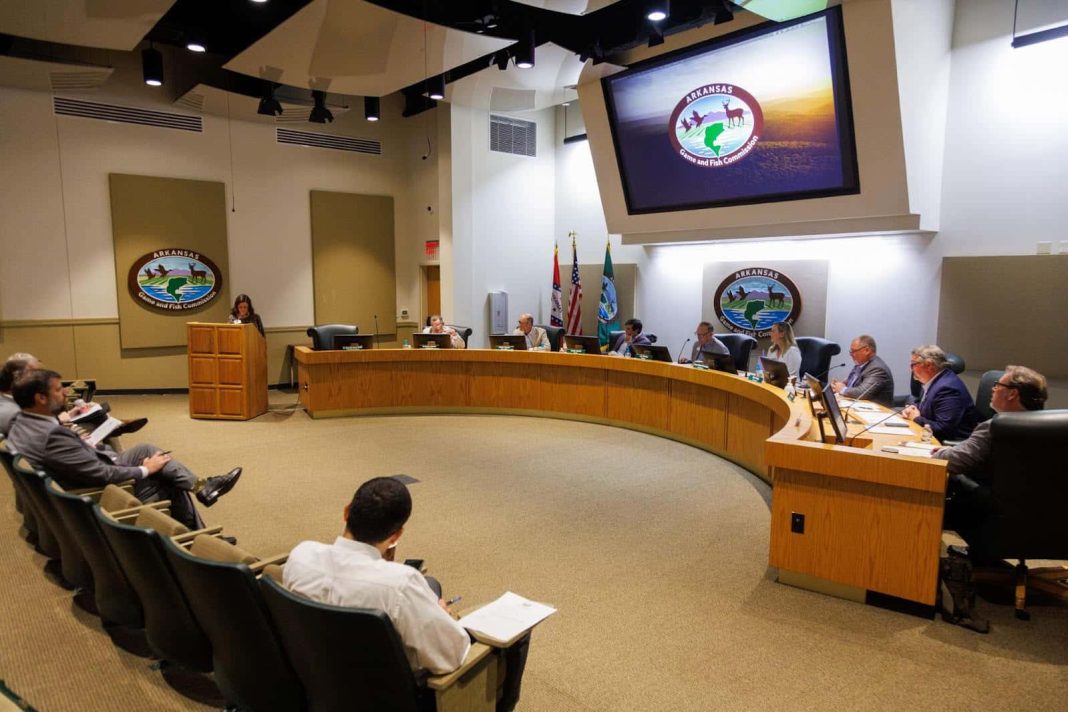By Randy Zellers
The Arkansas Game and Fish Commission unanimously voted to transfer $682,487 to the Arkansas Department of Economic Development’s Rural Services Division to fund grants available to schools throughout the state.
The money for this transfer was derived from all fines for boating and wildlife violations collected in Fiscal Year 2024. The ADEC accepts applications for grants in each Arkansas county from mid-August through mid-October each year and distributes this fine money according to the fines received in each county. Expenses for AGFC programs such as the Youth Shooting Sports and Archery in the Schools are allowed for grant requests, as are supplies for schoolyard habitat projects and conservation education programs.
“This is a great opportunity for schools, especially those in rural areas that have limited funds, to offer conservation programming to their students,” Mary Beth Hatch, chief of the AGFC’s Education Division, said.
Applications for these fine money grants will be available at the Rural Services Division’s website within the next few weeks.
In his monthly report to the Commission AGFC Director Austin Booth recognized members of the public who took time out of their schedules to speak about recent regulations changes and considerations to be incorporated into the next regulations cycle. He also took a moment to reflect on the accomplishments of the last fiscal year, which will be available for viewing in the agency’s annual report later this month.
“Thomas Paine said, ‘The harder the conflict, the more glorious the triumph … I love the man who can smile in trouble, that can gather strength from distress and grow,’” Booth stated. “It was hard for me not to think about this quote as I reviewed this agency’s FY 24 Annual Report.”
The report highlights some of the accomplishments the agency has had during the last fiscal year but, more importantly, measures the outcomes of the goals the agency set for itself in its 5-year strategic plan “The Natural State Tomorrow.”
“Make no mistake, these annual reports are not brag sheets,” Booth said. “It is solely a motivation by this agency to show transparency and accountability to the public, not only for what we do, but to ensure that we’re progressing toward our long-term goals for conservation both on the natural resource side and on the people side.”
Matt Horton, Aquatic Nuisance Species Program coordinator for the AGFC, presented an update on non-native, invasive species in Arkansas and the threats they pose to aquatic habitat, recreation and commercial activities. The agency’s invasive carp removal program was a high point of his presentation, having netted and removed 343,000 pounds of invasive carp since its introduction.
According to Horton, the AGFC received federal grants to help in the effort, and is exploring a way to incentivize harvest by commercial anglers by paying an additional 18 cents per pound above market value to commercial anglers for their carp catch.
“Our goal is to develop a commercial harvest-based control program to increase our effort to remove a large amount of biomass of these fish from our river systems,” Horton said. “Since February, commercial fishermen have removed 265,299 pounds of invasive carp. We have enough money to provide incentives for 1.9 million pounds.”
Horton’s presentation also covered many of the latest introductions of invasive species, including mystery snails, giant apple snails and giant salvinia.
In other business, the Commission:
- Approved a budget carry-forward of $1.1 million in funds from Fiscal Year 2024.
- Awarded retiring wildlife officer Capt. Stephanie Weatherington her service sidearm for 29 years of service to the AGFC.






